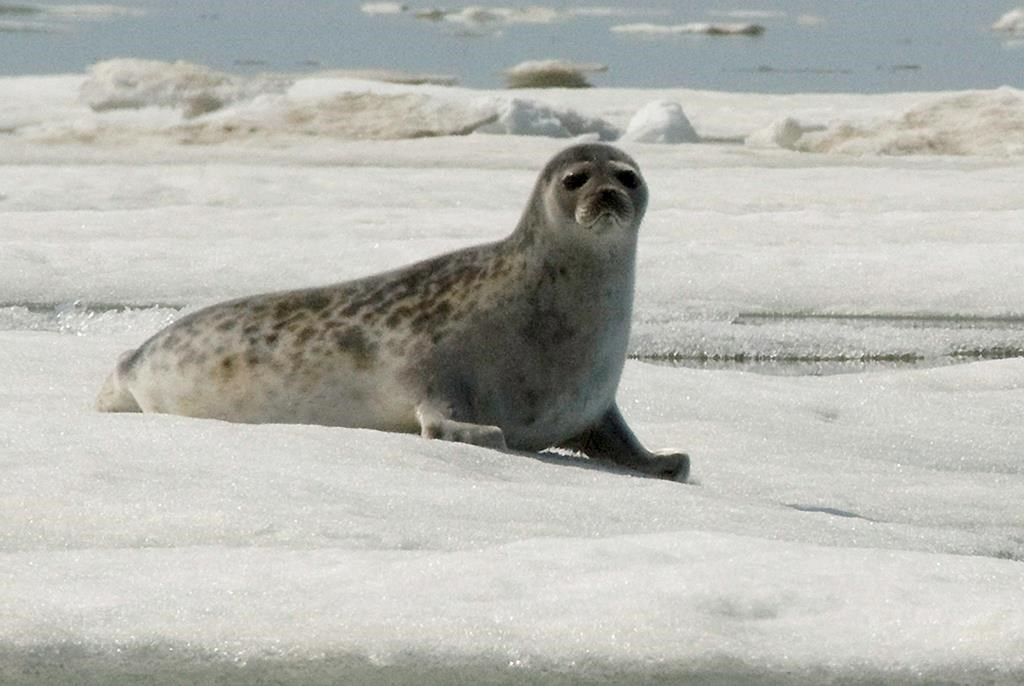Support strong Canadian climate journalism for 2025
Scientists attending a national gathering of Arctic researchers are outlining a widening range of climate change risks for so-called "sentinel" species, such as ringed seals and beluga whales, which have sustained Inuit for millennia.
The ArcticNet conference happening this week in Halifax comes in the wake of a scientific committee advising that ringed seals be listed under the federal Species at Risk Act.
"This small seal needs sea ice to thrive," states the opening line of the executive summary released last week by the Committee on the Status of Endangered Wildlife in Canada, or COSEWIC.
Reduction in sea ice due to climate warming is expected to reduce the birthing grounds for ringed seal pups, and as a result the species is predicted to decline over the next three generations, the summary continued.
However, the report also notes current population estimates for the seals — a key source of food in the North — remain stable, with about 2 million believed to be in the Arctic.
As scientists, policy-makers and Indigenous harvesters gathered in the Nova Scotia capital, news of the recommendation was circulating, and brought initial reactions of concern.
Enooyaq Sudlovenick, a doctoral student at the University of Manitoba, presented a talk at the conference on ringed seal health, explaining she collects data from biological measurements and interviews with Inuit harvesters.
The 28-year-old researcher noted that in the eastern Arctic, she is hearing accounts of more harp seals coming from Labrador into areas inhabited by the ringed seals.
"More harp seals ... could potentially be a negative effect (for ringed seals) — not only for food competition, but they could be interacting and bringing food pathogens too," she said in an interview.
Asked about the possibility the mammals could be listed under the act as a "species of concern," Sudlovenick said it raises major questions for members of her Inuit community.
"Could it mean we will be limited? Are we going to have a quota?" she asked.
Papers were also presented on the beluga whale — another marine mammal central to Inuit history and food supply.
Lisa Loseto, a biologist with the federal Fisheries Department, presented a paper titled "Beluga mortalities in the eastern Beaufort Sea: What happened?"
Loseto and her teams are trying to understand why many of the whales they restrained and tagged have died this summer.
It's a sharp shift from the resilience of the whales in previous decades, when the same tagging methods were used without similar die-offs, she said.
Loseto's theory is that climate change impacts on the whales' food — particularly Arctic cod, which prefer cooler waters — may be weakening the belugas' ability to withstand capture stress.
"Higher storms, higher temperatures and lack of food is putting these whales at risk during what wasn't historically a stressful situation of putting a tag on," she said in an interview.
She adds that with 40,000 belugas in the eastern Beaufort Sea, the sub-population is currently thought to be stable.
Derrick Pottle, a hunter, guide, guide and harvester from Rigolet, Labrador, said in an interview that ringed seals are a key food source for the lives of the Nunatsiavut communities.
But Pottle said he wants the scientists to provide more information on how they reach their conclusions.
"We're quite capable of looking out for and managing our own lives," he said.
John Noksana Jr., a member of the Canada-Inuvialuit Fisheries Joint Management Committee, said he missed the meeting to discuss the designation of the ringed seal, but also has questions about the data.
"They should go to the people out there seeing the change, if any, and consult with them before they take this to the next step," he said in an interview.
David Lee, co-chair of the COSEWIC sub-committee that examined ringed seals, said the group has relied on Indigenous knowledge to document some changes in distribution of the ringed seals.
However, the key to its recommendations is the data coming the United Nations's Intergovernmental Panel on Climate Change on continued warming trends.
"The (climate) models continue to be updated, and with sea ice decline accelerating, it seemed appropriate to add seals as an animal of special concern," he said in an interview.
The committee has also committed to assessments on narwhal and killer whales in future discussions, said Lee.
Meanwhile, Loseto said the belugas, ringed seals and other species central to daily life in the North are being watched carefully.
"They're clues or cues to us on how the ecosystem is doing. These are warning signs," she said.
This report by The Canadian Press was first published Dec. 5, 2019.





Comments